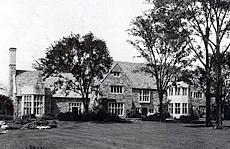Web browser cannot access all needed files. Your gallery may not display correctly.
|
| |
|
The Macauley Family Alvan Macauley was the president of Packard Motor Company. Frederick R. Mauck said, "...Mr. Macauley indeed left a footprint not only in the history of the automobile industry, he left his footprint in American History. Often history, a backward glance, will discover an event or person that not many people have heard about. Great biographies have been written about people after they are gone, however, few people were recognized, nor given so many awards while, shall we say, they were on active duty, as Mr. Alvan Macauley. Ford, Chrysler, Nash, the Dodge brothers, Willys, Studebaker, Graham, General Motors were but a few of the members of the Automobile Manufactures Association (AMA) that for 18 years elected Mr. Macauley as the Association’s president. Indeed it would take an unusual person to represent and head those leaders of industry. Mr. Macauley was also the head of the Automotive Council for War Production during WW II. Mr. Macauley arrived at Packard as General Manager in 1910. Although he retained the office of General Manager, by 1916. Mr. Macauley was elevated to President of the company, succeeding Col. Henry B. Joy. Mr. Macauley would retire as Chairman of the Board in 1948. How did Mr. Macauley get his reputation as "The Gentleman of Detroit"? He earned it. As the reputation of The Packard Motor Car Company grew so did the reputation of Mr. Alvan Macauley. Or was it the other way?” The Macauley house: 735 Lake Shore Road, Grosse Pointe Shores... The massing and proportions of the house were carefully studied and a pleasing effect was secured by a subtle variety of details and a contrast in textures. The excellent quality of the masonary was assured by the employment of Scotsmen with years of experience, supervised by a Cotswold foreman. The skilled woodcarving of the distinguished interior was executed under the direction of the Hayden Company of New York... Source: Buildings of Detroit, by W. Hawkins Ferry. | |
